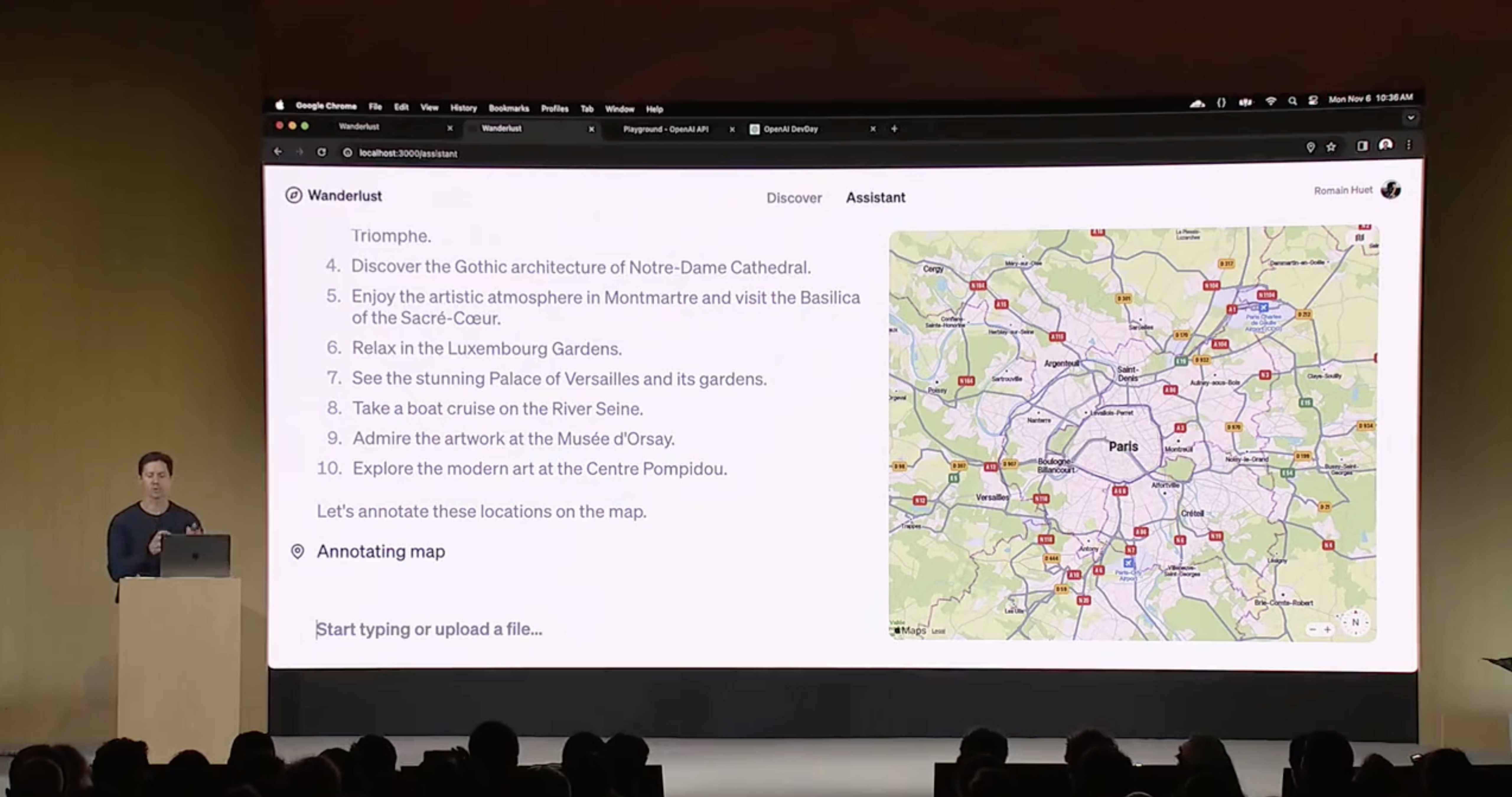Since it debuted in November 2022, ChatGPT has become one of the world's best productivity tools. While it can never replace the human element at the heart of sales, it can help sales professionals work faster and smarter than ever before.
This guide is packed with tips on using ChatGPT for sales, from market research to practicing scripts, creating pitch decks, and more. Includes ready-to-use sales prompts!
{toc}
The Benefits of Using ChatGPT for Sales
Using ChatGPT for sales offers many benefits, no matter your role or workflow:
- Save time gathering data about your target market, competitors, prospects, and more
- Makes it easier to create sales presentations like pitch decks with AI slide generators
- Can help you process large amounts of sales data to inform your pitches and strategies
- Spend less time creating sales content (e.g., emails, call scripts, etc.)
- Get better insights about your leads
- Can help you improve your sales skills by roleplaying and providing feedback on your performance
- Can suggest fresh ideas and angles you may not have thought of
6 Practical Ways to Use ChatGPT for Sales
Having the right mindset is key to using ChatGPT for sales. Treat it as an intelligent assistant that thrives with detailed guidance, aka prompts. If you're new to the concept, read our article on how to write effective AI prompts.
In the meantime, let's talk about how you can use ChatGPT for various sales tasks:
1. How to Conduct Market Research Using ChatGPT
ChatGPT's ability to browse the internet (via ChatGPT-4), synthesize vast amounts of data, and hold conversations makes it a powerful tool for market research.
Start by using a prompt like this:
- Conduct market research on [product/service/industry] for [target market]. Include preferences, buying habits, competitor analysis, trends, and opportunities. Provide data, consumer feedback, and recommendations.
Here's what we got – it's pretty detailed and even included citations so we can double-check the information:

From there, prompt ChatGPT to deliver insights. Try these examples:
- Identify and compare the top five competitors in the [Industry/Market] and analyze their market share and unique selling propositions.
- What are the primary consumer buying habits for [Product/Service] among [Demographic] in [Year/Timeframe]?
- Perform a SWOT analysis for [Product/Service] targeting [Demographic] in [Location].
- Discuss the impact of [Recent Trend or Event] on [Market/Industry] for [Demographic].
Of course, you'll still want to validate ChatGPT's output with other sources, such as industry reports, customer feedback, and your expertise.
If you'd like to skip this step, you can use an AI tool like Plus AI to create a custom market research report in presentation format, so it's easy to share with your team.
Power Tip ✅: Use research GPTs to comb through the latest industry news, market reports, statistics, and other data. Not familiar with GPTs? Read our guide to ChatGPT’s custom GPTs and GPT plugins.
2. How to Create Pitch Decks Using ChatGPT
As brilliant as it is, you can't use ChatGPT to create pitch decks and other sales presentations.
Instead, use a presentation tool like Plus AI, which works like ChatGPT for PowerPoint and Google Slides. Follow these steps:
Step 1: Install Plus AI to Your Google Workspace
Plus AI works directly inside Google Slides, so you need to add it as an extension first.
To do that, install the Plus AI add-on to your Google Workspace. When that's done, you should now be able to find it under the "Extensions" tab on Google Slides.

Step 2: Give Plus AI Details About Your Pitch
Like ChatGPT, Plus AI can also create pitch decks using prompts. The more detailed your prompts, the better, but don't worry too much about perfecting them. Plus AI can create meaningful decks out of the simplest prompts.
You can use this as a starting point:
- Create a detailed pitch deck about our product/service, [Product/Service] called [Product/Service Name] targeted towards [Target Market] in [Location]. This will be presented to [Audience], who are [Characteristics]. Our goal is to [Your Pitch Goal].
Then, paste that into the text editor:

You can provide more context to Plus by uploading sales transcripts, meeting notes, strategy PDFs, notes about who you're presenting to, industry articles, and other content relevant to your pitch.
Feel free to pick a theme at this point – you can always change it later. Click "Generate Outline" when you're ready.
Step 3: Review and Edit Your Pitch Deck Outline
After a couple of minutes, Plus AI will deliver a draft outline that looks like this:

You can refine your prompt and outline structure, including the number of slides you want in your deck. When you're happy with the outline, click "Generate Slides."
Step 4: Polish Your Pitch Deck with Plus AI
Once Plus AI is done, you'll have a complete pitch deck ready to be edited on Google Slides:

Keep an eye out for super useful Plus Tips throughout the deck:

Continue editing both by hand and using other Plus tools like the AI writer and AI designer.
Step 5: Present or Share Your AI-Generated Pitch Deck
Plus AI works within Google Slides, so you can present your pitch deck without leaving the platform. You can also convert Google Slides to PowerPoint if you wish.
Feeling nervous about your pitch? Boost your confidence with our 10 presentation tips!
3. How to Create a Sales Strategy Using ChatGPT
ChatGPT is an excellent tool for brainstorming sales strategies. Its training data includes everything from sales tactics to case studies, industry reports, books, and presentations—virtually everything ever written about sales—all of which can be harnessed with the right prompts.
Start by telling ChatGPT as much as you can about your:
- Product/service details
- Target customer demographics and psychographics
- Current sales process and metrics
- Competitors
- Industry trends
- Company goals and resources
Once ChatGPT "knows" your business, start brainstorming. For instance, tell ChatGPT to dig into your competitors and help you learn from their wins and losses. Ask for unconventional ways to spin your strategy. Request ideas based on various sales frameworks.
The only limit is your imagination, so let your creative juices flowing with these prompts:
- Based on the provided information, create a sales strategy for [Product/Service] that will appeal to [Target Market] and help us achieve [Specific Goal]. Include tactics for lead generation, sales enablement, and customer retention.
- Analyze our current sales process and metrics. Identify areas for improvement and suggest changes to increase efficiency and effectiveness.
- Compare our sales strategy to [Competitor URL]. What are they doing well that we could learn from? How can we differentiate ourselves?
- Discuss how [Industry Trend/Event] will likely impact our sales in the next [Timeframe]. Recommend how we can adapt our strategy to capitalize on this trend.
Power Tip ✅: Use ChatGPT to create a sales playbook that documents your entire sales process, from prospecting to closing to account management. This can serve as a foundation for future strategy sessions.
4. How to Write Outbound Emails Using ChatGPT
Outbound sales outreach is a numbers game, but ChatGPT can help you reach more prospects with higher-quality emails. Have it generate email subject lines, opening hooks, pain point/value prop copy, CTAs, and more.

Example prompts:
- Write 5 engaging email subject lines for a cold outreach to [prospect type]
- Create an opening hook showing [prospect type] that we understand their pain points around [topic]
- How would you personalize this cold email template for a prospect who [characteristic/trigger event]?
5. How to Analyze Leads & Sales Opportunities Using ChatGPT
Lead analysis is critical to sales, but it can be a tedious process, especially if you're dealing with a large volume of prospects. It's the perfect task to offload on ChatGPT.
Again, data is the key. Start by gathering information about your leads, such as:
- Demographics
- Company name and size
- Contact name and role
- Source (e.g., inbound, outbound, referral)
- Engagement history (e.g., emails, calls, meetings)
- Buying stage and timeline
- Budget and decision-making process
- Objections and competitor mentions
You can input this data into ChatGPT in various formats – a spreadsheet, a document, screenshots, or copying/pasting directly into the chat.
Using that information, ask ChatGPT to reveal patterns, qualify/disqualify your leads, recommend tactics, segment your leads, and more:
- What do our highest-converting leads have in common? How can we apply that to increase conversion across the board?
- Categorize our leads by industry, size, or stage and identify underperforming segments.
- Based on the provided lead data, score each prospect on a scale of 1-10 in terms of their likelihood to convert. Explain your reasoning for each score.
- Identify the top 5 leads we should prioritize based on their engagement history, buying stage, and budget. Suggest the next best action to take with each.
- List our top 20 leads and recommend positioning strategies based on the lead's industry and role.
6. How to Roleplay Sales Conversations Using ChatGPT
Roleplaying with ChatGPT is a low-risk, high-reward way to practice your sales skills. Set the scene by providing context about a fictional prospect, then have ChatGPT act as the prospect while you carry out a simulated sales call.
Make the roleplay more realistic by adding details to this prompt:
- "Let's roleplay a sales call. You are [Prospect Name], a [Job Title] at [Company]. Your main challenges are [Challenges]. You're somewhat skeptical about our [Product/Service] because [Objection]. I'll start the conversation, and you respond as the prospect would. Let's begin."
Here's a sample output. Notice how ChatGPT sounds skeptical throughout – exactly the tone we specified in the prompt:

Afterward, dissect your performance with ChatGPT. For instance, are there better questions you could have asked? Were you too pushy or not assertive enough? You can also transcribe your past sales calls and upload them to ChatGPT for more nuanced feedback.
Conclusion
To get the most out of ChatGPT for sales, get creative with different prompts and use cases. The more you use it, the more you'll discover just how versatile and useful it can be.
And remember, ChatGPT is just the beginning– combine it with GPT-powered apps like Plus AI to expand its potential.






